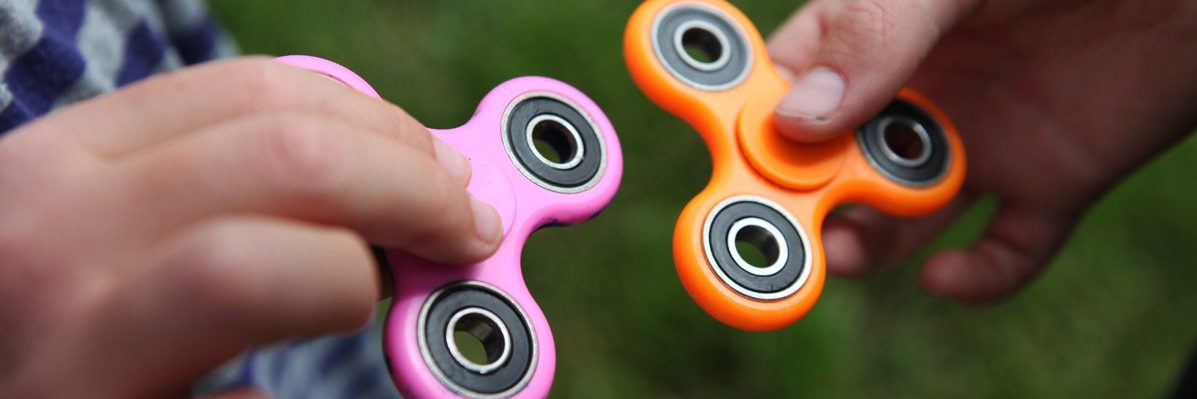Adolescence is a critical time of growth, self-discovery, and, unfortunately, significant challenges. Some teens struggle with behavioral issues, emotional regulation, mental health disorders, and unhealthy coping mechanisms that interfere with their daily lives. When...
Recent Posts
After Residential Treatment: Helping Teens Transition Back Home
Residential treatment can be life-changing for a teen struggling with mental health, trauma, or behavioral challenges. But what happens after your child returns home? The transition back to daily life is a critical period — one that requires patience, structure, and...
How Residential Treatment Supports Teens with Co-Occurring Disorders
Navigating adolescence is challenging enough, but for teens grappling with co-occurring disorders, the journey can feel insurmountable. Co-occurring disorders, also known as dual diagnoses, refer to the presence of two health disorders occurring at the same time....
A Parent’s Guide To Navigating Grief In Teenagers
Grief is a complex emotion that can be challenging for teens to navigate. According to the Childhood Bereavement Estimation Model (CBEM), 1 in 12 children and teens in the U.S. will experience the death of a parent or sibling by age 18. While grief is usually...
How Long Is Residential Treatment for Teens?
If your child is about to begin a stay at a residential treatment center, you’re bound to have a lot of questions. What types of therapy will be involved? Will our family be allowed to visit? And, of course, how long is a teen residential treatment program? In this...
Is Residential Treatment Considered Inpatient or Outpatient?
If you’ve never engaged with residential treatment centers before, it’s common to ask: is residential treatment considered inpatient or outpatient? Well, the answer is simple: our residential teen treatment centers are considered inpatient because teens stay at our...
Benefits of Residential Treatment for Teens: When to Choose It Over Other Treatment Programs
When seeking help for your teen, it’s important to know the benefits of residential treatment teens can take advantage of. For teens suffering from mental health disorders, behavioral disorders, psychological disorders, or addiction issues, there are a variety of...
Does Insurance Cover Teen Residential Treatment?
How Much Does Residential Treatment Cost? Cost of Residential Treatment The cost of residential treatment varies between each Residential Treatment Center (RTC). It may range from free (which is very uncommon) to tens of thousands of dollars per month. And if you are...
3% of Teens Identify as Transgender or Gender Nonconforming in America
How Many Transgender Teens Are There? Approximately 150,000 American teens (ages 13 to 17) identify as transgender in the United States today. Of course, there is no general age in which people typically “discover” or “come out” as transgender. Nonetheless, more and...
Recognizing Signs of Teen Depression: A Guide for Parents
It is very common for children and adolescents to experience occasional moodiness or periods of sadness. The causes of teen depression are multifaceted, involving biological, environmental, and social factors such as bullying, mental health conditions, stressful life...
Distinguishing Between Signs of Depression or “Moodiness” in Teens
Parents often wonder how to distinguish normal teenage mood swings and rebellions from actual symptoms of depression. Fortunately, there are several ways to tell. As many as 1 in 5 teenagers will experience depression at some point during adolescence. Unfortunately,...
Social Anxiety Disorder in Teens: Signs, Symptoms, and How to Help
What is Social Anxiety Disorder? Social anxiety disorder (SAD) affects 1 out of 3 adolescents between 13 and 18 years old. Over 19 million people across America suffer from social anxiety disorder (SAD) today, including a significant number of young adults. It is...
Teen Depression Prevention: Parent, Friend, and Support Tips
At any given time, one out of every five teenagers is experiencing major depression. If you are a parent to an adolescent or teenager, you are likely familiar with the moodiness inherent to this age group. Mood swings are common, as teens are experiencing a vast...
How to Talk to Your Teen About Depression
Teen depression is more common — and more serious — than many parents realize. While emotional ups and downs are a normal part of adolescence, persistent sadness, irritability, or withdrawal may point to something deeper. Knowing how to talk to your teenager about...
Managing Expectations With Teens
As a parent of an adolescent, teen, or young adult, your attitudes, actions, and beliefs can have a tremendous impact on your child’s well-being. Your teen is experiencing the challenging process of transitioning from childhood to adulthood. As someone who has gone...
Investigating Fidget Spinner Mania
Fidget spinners have become one of the most popular new products on the market. What is obvious at first glance is that—like a top, or a yo-yo, or a variety of other similar toys—fidget spinners can provide a fun diversion for both children and adults. But what is not so obvious is what, if anything, these gizmos provide in terms of mental well-being. While some claim these toys can be used to help treat ADHD and anxiety, others claim they provide just another distraction without any real utility. Regardless, fidget spinners have been flying off of shelves across the country, and their true value is worthy of investigation.
THE PRODUCT
Contrary to popular belief, fidget spinners actually were invented in the 1990s. However, they did not reach their peak popularity until this year. The peak rise in popularity occurred between April 13th and April 27th, as demonstrated by an absolute explosion in sales and Google searches alike. The product itself is rather simple. Essentially, the fidget spinner is a plastic top-like object that is held in one hand while its three “blades” can be spun at high speeds. While it is spinning, the toy provides a sort of pleasing buzz to go along with its pleasing visual effects. What is amazing about the product is how simple it really is, yet, its popularity this year seems to remain unrivaled.
THE CLAIMS
The makers of the fidget spinner—contrary to other types of similar toys such as a yo-yo—have not been marketing their product as a simple distraction. Rather, this product is one that has been marketed with a wide variety of claims, particularly its ability to treat psychological conditions such as ADHD, autism, depression, and anxiety. These conditions are among the most common in the United States, and both their prevalence and relative difficulty to treat are perhaps the reason this product has been selling so well.
Advocates for the fidget spinner claim that its utility comes from its ability to provide users with a distraction that doesn’t occupy their entire attention. Allegedly, the user can easily multi-task by spinning the fidget spinner in one hand while writing or focusing on something else at the exact same time. But the question remains—are these products actually providing any sort of relief for users with ADHD, autism, depression, or anxiety? Or are they simply a distraction that doesn’t really help?
THE RESEARCH
Current research shows that anxiety, stress, and depression is at an all-time high among Americans, and because of this, the need for some sort of immediate solution is high. But while there are many individuals who might want the fidget spinner to be an effective cure for their personal struggles, unfortunately, the research that has been done so far says otherwise.
Because the fidget spinner has been presented to the American people with such bold claims, it has become one of the most researched desk toys of 2017. Researchers at Duke University concluded the toy has “basically no scientific evidence” to support the claim that it helps students with ADHD. More positive results came out of UC Davis, where researchers concluded that the fidget spinner might be “calming” for children with ADHD, but even where researchers were willing to recognize the potential positive effects of such a toy, they were still unwilling to claim that the toy itself presented any sort of realistic treatment option.
Fidget spinners have also been banned from many elementary, middle, and high school classrooms across the country because not only do they provide no sort of medically verifiable solutions, but they create tremendous distractions. Like many social fads, fidget spinners are particularly popular with young people and have gained a nearly cult-like obsession by many. Whether this fad is one that is here to stay remains unknown, but it seems its longevity will certainly not be because of any sort of psychological benefits.
THE CONCLUSION
Ultimately, the value of a fidget spinner really depends on what you hope to gain from it. If what you are hoping for is a fascinating desktop toy that can provide a diversion from the mundane working day, then a fidget spinner might be exactly what you need. If what you are hoping for is a long-term cure for ADHD, autism, anxiety, depression, or any other sort of psychological condition, sadly, it seems the fidget spinner is not going to be good enough. The fidget spinner’s popularity is indeed a likely consequence of it being marketed as a cure to many common conditions—but, as research shows, just because it may claim to be a solution, that doesn’t necessarily mean that it is one. As is the case with nearly every new fad on the market, it seems the divine claims of the fidget spinner are too good to be true.
Polaris Teen Center is a residential treatment facility for teens and adolescents suffering from severe mental health disorders. Our highly accredited facility is fully licensed and certified in Trauma Informed Care and is a part of the Behavioral Health Association of Providers (formerly AATA).
Previous Post
Next Post
Related Posts
A Parent’s Guide To Navigating Grief In Teenagers
Grief is a complex emotion that can be challenging for teens to navigate. According to the Childhood Bereavement Estimation Model (CBEM), 1 in 12 children and teens in the U.S. will experience the death of a parent or sibling by age 18. While grief is usually...
Benefits of Residential Treatment for Teens: When to Choose It Over Other Treatment Programs
When seeking help for your teen, it’s important to know the benefits of residential treatment teens can take advantage of. For teens suffering from mental health disorders, behavioral disorders, psychological disorders, or addiction issues, there are a variety of...
Does Insurance Cover Teen Residential Treatment?
How Much Does Residential Treatment Cost? Cost of Residential Treatment The cost of residential treatment varies between each Residential Treatment Center (RTC). It may range from free (which is very uncommon) to tens of thousands of dollars per month. And if you are...
3% of Teens Identify as Transgender or Gender Nonconforming in America
How Many Transgender Teens Are There? Approximately 150,000 American teens (ages 13 to 17) identify as transgender in the United States today. Of course, there is no general age in which people typically “discover” or “come out” as transgender. Nonetheless, more and...
Recognizing Signs of Teen Depression: A Guide for Parents
It is very common for children and adolescents to experience occasional moodiness or periods of sadness. The causes of teen depression are multifaceted, involving biological, environmental, and social factors such as bullying, mental health conditions, stressful life...
Distinguishing Between Signs of Depression or “Moodiness” in Teens
Parents often wonder how to distinguish normal teenage mood swings and rebellions from actual symptoms of depression. Fortunately, there are several ways to tell. As many as 1 in 5 teenagers will experience depression at some point during adolescence. Unfortunately,...
Social Anxiety Disorder in Teens: Signs, Symptoms, and How to Help
What is Social Anxiety Disorder? Social anxiety disorder (SAD) affects 1 out of 3 adolescents between 13 and 18 years old. Over 19 million people across America suffer from social anxiety disorder (SAD) today, including a significant number of young adults. It is...
Teen Depression Prevention: Parent, Friend, and Support Tips
At any given time, one out of every five teenagers is experiencing major depression. If you are a parent to an adolescent or teenager, you are likely familiar with the moodiness inherent to this age group. Mood swings are common, as teens are experiencing a vast...
How to Talk to Your Teen About Depression
Teen depression is more common — and more serious — than many parents realize. While emotional ups and downs are a normal part of adolescence, persistent sadness, irritability, or withdrawal may point to something deeper. Knowing how to talk to your teenager about...







